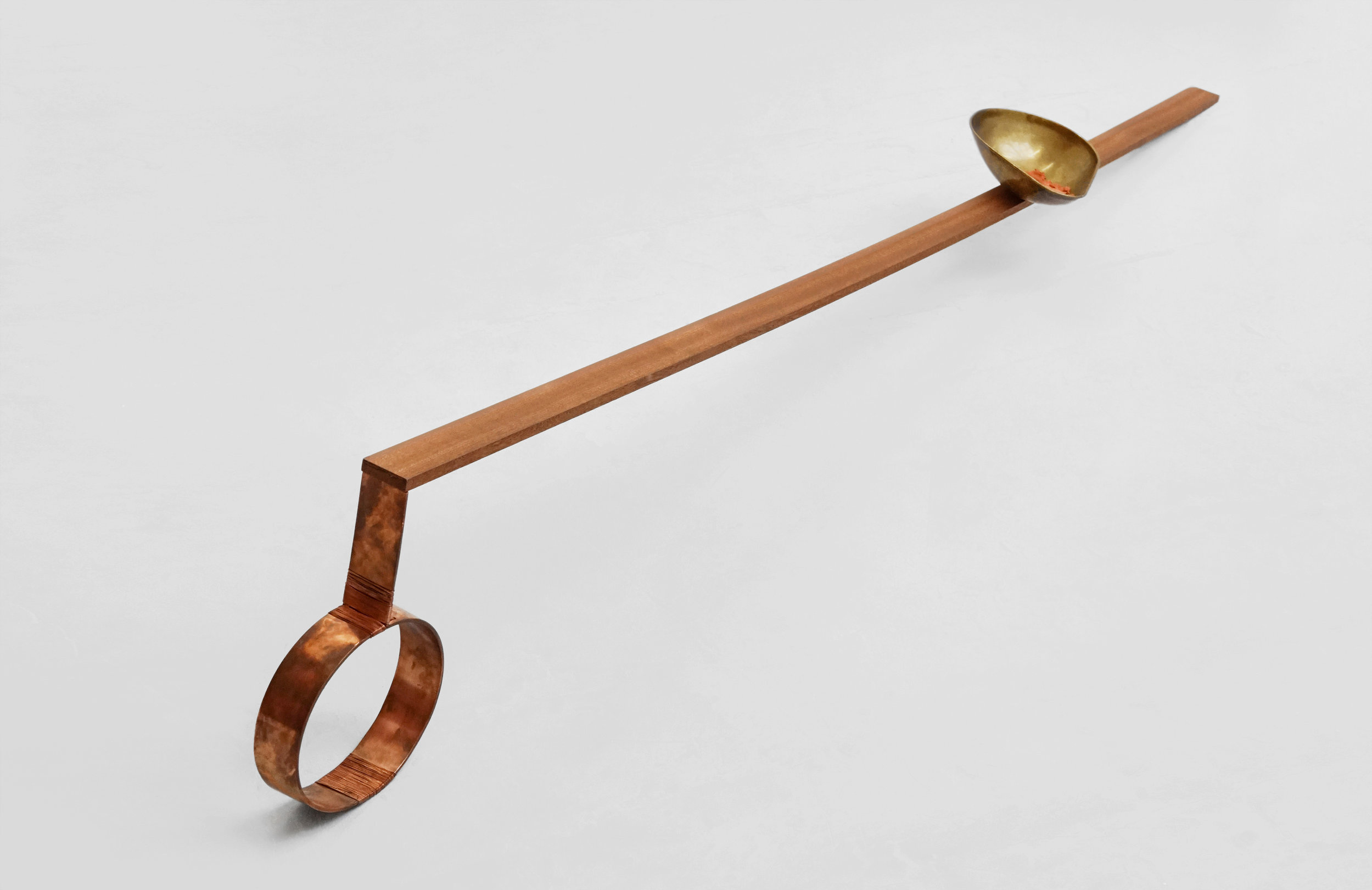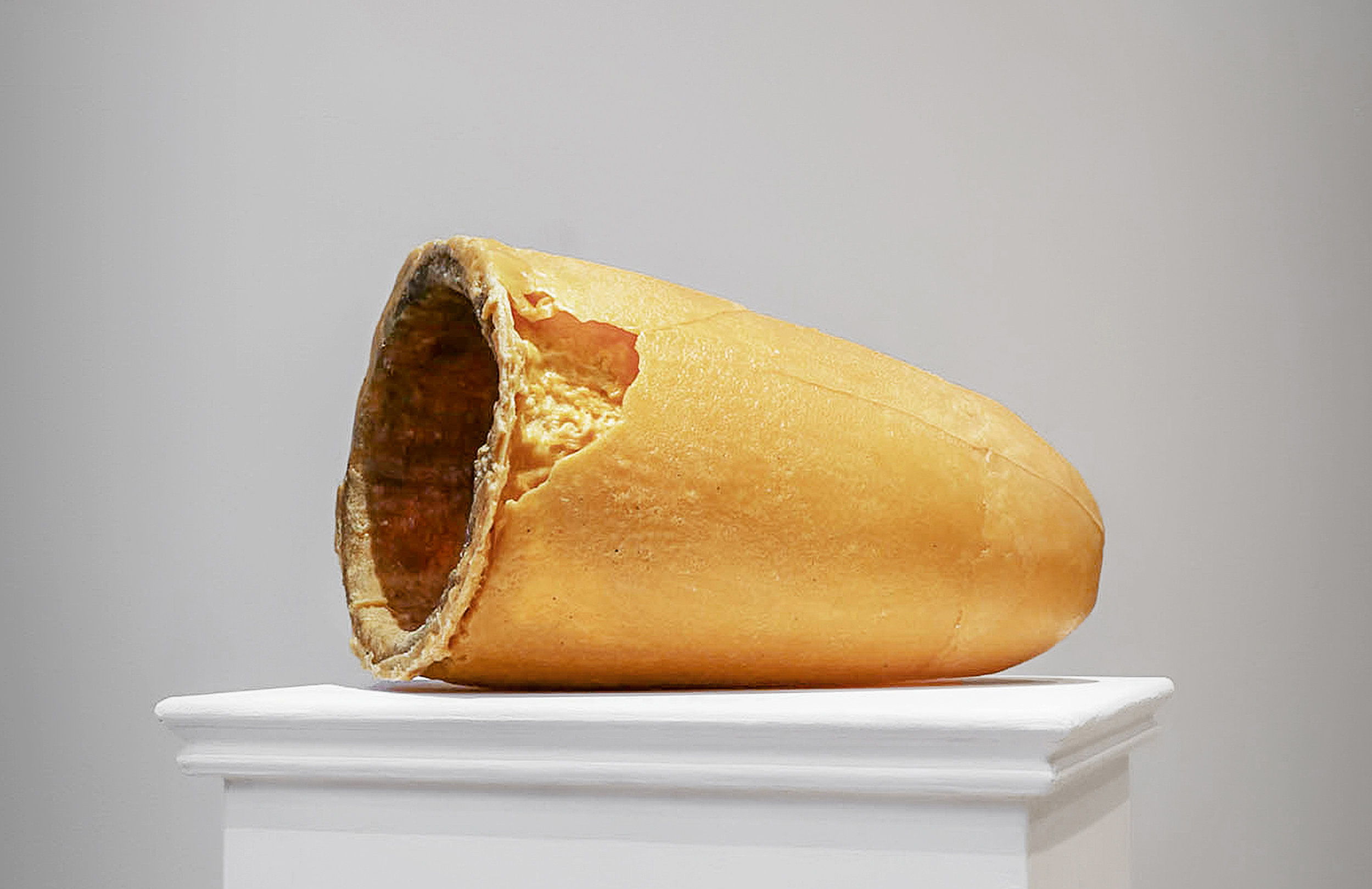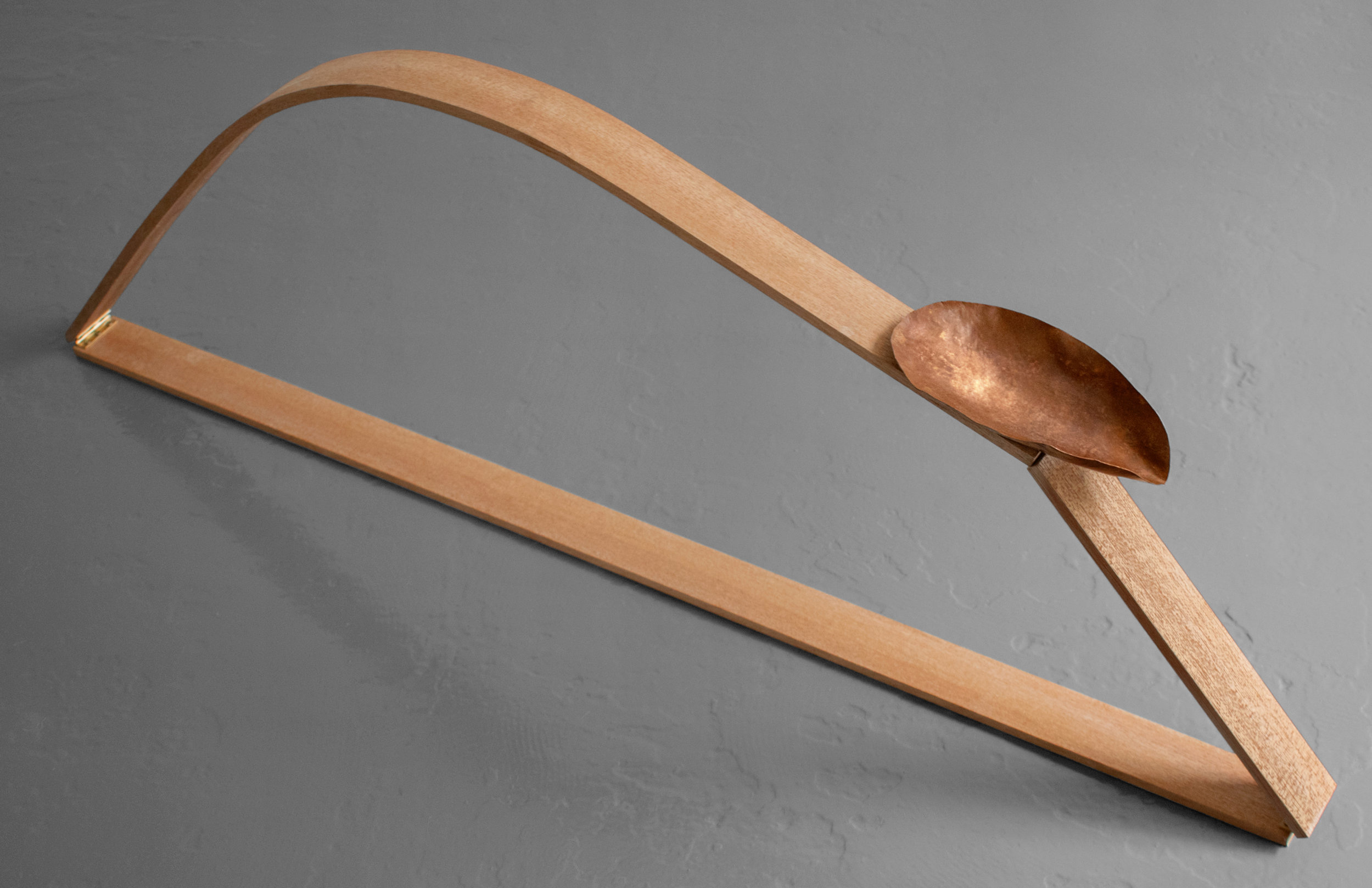Maria Positano

“I am interested in the human need to create objects which agency exists beyond a tangible function or result.”
Interview by Isabel Sachs
Could you tell us a bit about yourself and your background? Where did you study?
My background is a mix of different elements: I was born in London, where I spent the first two years of my life. Then moved with my family to live in the States, in Washington DC, where I spent five years. After that we moved to Paris, for three years.
At the age of eight, after travelling quite a bit, I finally went back home: We moved to Naples, in the South of Italy, in my country of origin. This delayed encounter with home, still constitutes a big influence in my work.
Naples, in its chaotic and wild beauty, majorly shaped my artistic sensitivity. My early visual memories are of the Vesuvio, the black volcanic peak which touches the sky, the deep blue of the Mediterranean Sea and the porous yellow of the volcanic Tufo stone. There is, in my hometown, a strong sense of nostalgic decadence and beauty, like something in constant corrosion which still somehow manages to stand up and exist.
In Naples, I studied Fine Art in High School, and I meet my first strong art mentor. Rosaria Matarese, Neapolitan artist who was part of the Linea Sud movement, was my tutor at the time. She first introduced me Arte Povera and the Transavanguardia movement, through which I learned the importance and the beauty of everyday materials and of visual experimentation. She believed in my work and I wouldn’t be the artist that I am without her.
In those years, I started to work with found objects for the first time and was discovering the importance of symbology in my work, connecting with the extensive tradition of religious and pagan Neapolitan visual codes.
Notions of balance seem to be constant in your practice. What draws you to these poses?
The work for me is always representative of an internal state; an emotion, or of an aspect of being human. Balancing objects seems to come from a pull that I feel towards creating impossible poses. The sense of a balanced image, inevitably triggers the notion of instability and struggle. Experiencing these, have to do with addressing the strive of coming to life or to exist in the world. The aspiration to manipulate materials to impossible results is for me the most human attempt to create something original. For example, I use deconstructed shapes, material destruction, and formal harmony; in an attempt to create imagery which echoes my creative process (and universal ways to create); through that, I attempt to make sense of my experiences.
I am interested in the human need to create objects which agency exists beyond a tangible function or result. I somehow think that my work comes from a place of desire, a strive for a paradoxical formula for clarity (desire which is yet always unsatisfied), or truth, equilibrium, balance. The works which are held together with balance, tension and compression, somehow hold a contradictory nature, and incorporate the creative dualities of: creation - destruction; emergence - disappearance; construction – de-construction.
Balance is for me a perfect visual trigger for all of these notions, by representing a liminal state of quiet equilibrium between these extremes, and by hinting to a state of mind of introspection.
‘Wax Crucible, Holding Within’
I would love to hear more about the “crucible” objects. I personally love the stark contrast on Bronze Crucible (Waiting for Your Awakening) What was the inspiration behind these?
These works represented a very important phase in my practice. They were, in fact, a significant step of individuation in my practice. The crucible series came from a need to create objects which were at once, whole and unspoiled.
I was engaging with the concept of the intermediary object and its symbolic associations. This is, in this series, a linking element between the sacred and the profane; or the inner world and the outer world. I was extremely fascinated by Alchemy, and I was reading about different ancient ritualistic traditions (located in Asia, India and China) focused on metal casting, seen as a sacred channel to reach a connection with the spiritual.
The crucible is a vessel used in the process of Loss - Wax Casting, it is used to transfer liquid bronze from the furnace to the mould. Once the Bronze is melted, it is ready to be poured to create a solid bronze object. The foundry and its processes were a significant metaphor for liminal spaces of transformation and of transmutation.
Bronze Crucible (Waiting for Your Awakening) specifically, is also a ‘Krater’ and an ‘Egg of Creation’. The Krater is the primal vessel, which can be represented in many forms, like a Volcano or a natural powerful force. The Egg of Creation, on the other hand, is an archetype for the creative principle, which contains the union of all natural dualities. The maternal and paternal principle at once. I was really fascinated by the idea of a self – feeding vessel, dealing with protrusive and sunken shapes, feminine and masculine principle and as an object which could have contained the primal matter of creation.
These symbols operate in the territory of the primal and I had the strong need to create an object which would stand for all of these. The crucible became the symbol for union, an object where opposites meet.
Tell us a bit about how you spend your day / studio routine? What is your studio like?
I always find questions about studio routines really challenging, because routine to me implies a passive and constant flow of work, where one just peacefully sort of sits on a desk in its own bubble. For me the studio experience feels more like a chaotic broken rhythm which somehow manages to be always in the backdrop, self-feeding and generative. In fact, every work simultaneously develops with many other things, like a job to pay the bills, other work to do and general life tasks.
I often feel studio time is not necessarily a time to be spent in the studio: The journey on the tube on my way to work, for example, is a moment where often many ideas come to my head and often determine new directions for a project. Studio, jobs and everyday tasks don’t have fixed boundaries to me, the studio is in a way limitless and everywhere.
A good way to describe my studio is that it transforms according to the project. The studio space is a carrier, in which a lot of residue materials from previous projects lay around and help creating the next thing. My studio is the colour of the material I am working with, and every new work the space changes with it. At the moment my materials are red casting sand, copper and coal, the studio sometimes looks like a red, brown and black landscape.
The studio has to respond to my need for flexibility and, most of all, be that place where things rest, come to life and brew till I see them, pick them up and work them till they become finished works. I have a very physical relationship with the studio, is the vessel for my frustrations, my anger, my desire. It is a space were I feel free to be myself and often the processes I use are influenced and influence my states of mind.
‘Blow to me, The Air I breathe’ 2019
‘Bring me to The River and I will Follow’ 2019
‘Dull Atonement’ 2019
Here They Rise, Declining
Bronze Crucible Waiting for your Awakening
You work with a variety of materials, from wax to ashes. What has been the most challenging material to work with?
Every material brings its own difficulties; I guess sometimes the challenge is in the process more than the material. It all seems to depend on how far a process challenges the behaviour of a material. Most of my work attempts to push the properties of materials, and plays with the way these are expected to look like or to be presented.
Steam bending wood, brazing copper and polishing bronze were probably the most challenging processes to work with; because it required commitment to process, patience and the results take time to emerge. The difficulty lays in pushing the material to create new visual results. My practice brings me to challenge what I feel I have learned so far, and to pick up a new process or acquire a new technique. The work feels like it is a constant learning curve and in a way it is always a fresh start. There is something really humble about confronting myself with materials, in a way it dictates the work to be made and not vice versa.
I could say that I weirdly enjoy difficult processes, it feels like the harder the achievement, the deeper is the engagement.
Sometime whilst in the process, I would feel like I am in a sacred place, in a moment of total engagement with the work, and every time it brings me to experience myself as a bear human, it reconnects me with the humility that it takes to be confronted with your limits and the physical rules of matter. I then remember where does my necessity to make come from, and where does it never fail to take me. It is an instant of remembrance, and fluidity; and I imagine all the people that must have felt like that in the history and in the centuries. This is my momentum.
More and more museums invite artists to engage with their collections. You had a residency at AKI to create an object to be displayed with an object from the Rijksmuseum . Can you tell us about that process and which collection would you like to work in if you had the choice?
In 2017, I was selected, with one other person from City and Guilds of London Art School, to be part of a two-week residency period at the Aki University in Enshede, Holland. The purpose of our stay was to work with the artist Helen Frick and a selected group of fellow artists from the Aki University, towards the creation of one work to be paired with a piece from the Glassware Collection in the Rijksmuseum Twenthe.
The work we had to make had to be an Intermediary Object and it had to function as a support for a piece from the Glassware Collection. Each artist had one or two drawings of the assigned glass object to work with, the difficult bit was that we were working from a drawing, so we had no real idea of its physicality. We had at our disposal a wood workshop, a metal workshop, a ceramics workshop and a printing workshop. I remember feeling happy like a kid in a candy shop, I had the amazing chance to engage with all these processes and these amazing technicians at the University!
These sort of experiences are a gift, and it is when I feel I am serving my purpose in this world. At the end of our stay, I had made a sort of watch tower - burned wood sculpture, which had a copper and velvet round platform for the work to rest on, quite weirdly looking overall.
If I had the chance to work with any collection in the world, I would probably quite love to choose the Metalwork Collection at the Victoria & Albert Museum in London. It would be an honour to respond to their collection of antique arms, armours, weapons and jewellery from the Bronze Age onwards!
Copper Shank + Weighting bowl 2018
‘Pick me Up’ 2019
‘Keep me Here’ 2019
Is there anything new and exciting in the pipeline you would like to tell us about?
I am currently in a collaborative duo show called ‘I Tread on the steps You Left me’, on show at The Rectory Projects till the 28th of May. This was a very exciting time for me, where I learned a lot. On show I have my most recent body of work, which I felt represented an important moment of growth in my practice.
In terms of upcoming projects, I will be part of a residency coming up with RUC Rural Residency for Contemporary Art, in a rural area in the North of Italy near Brescia. An opportunity which I am thrilled to have been given; it is for me an amazing occasion for introspection, research, and for concentrating on the self, the body, and nature.
I am working toward a few projects for 2020, but in the meanwhile, I am making conscious efforts to come back to the bare essentials, the studio and especially the work. I am processing a new series which I am really eager to start, (currently envisioned to be a Solo), in which I want to combine new urban elements. These following months will be dedicated to this new production.
Publish date: 13/06/2019
All images courtsey of the artist








